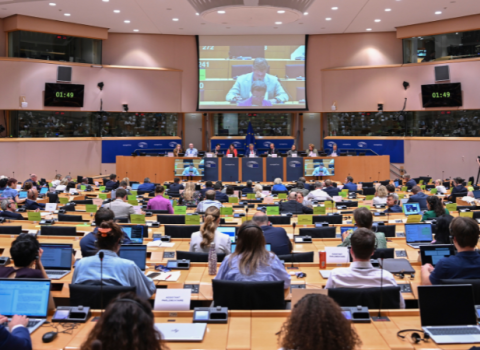It all started at a conference, where a speaker from the UK Met Office discussed advancements in their models. With a background in climate science, James saw the potential for further improvements using neural networks.
“It’s a reasonable approach, what they’re doing. But I felt like there were still some improvements which could be made,” he says.
This inspiration, combined with a desire to make a tangible impact, motivated him to pursue this innovative research direction and made it the target for his application for Marie Skłodowska-Curie Postdoctoral Fellowship (MSCA). A grant he got in 2023 as part of the Department of Mathematical Sciences at NTNU.
“Because it’s nice to sit down and prove things, but it’s also very nice to impact the world and make some positive changes,” he said.
Improving with neural network
“Together with my supervisor, Elena Celledoni, and collaborators from both academia and industry, we aim to improve weather forecasting using neural networks. Great strides have been made recently in weather forecasting with Google’s GraphCast, which has proven a powerful and useful tool. Our approach differs in one key aspect though. We aim to use neural networks to enhance existing technologies as opposed to replacing them.”
Higher simulation with limited area models
The challenge lies in the computational limitations that prevent global weather simulations at high resolutions. Weather forecasting has long involved many difficult-to-simulate phenomena (such as cloud coverage) and requires continuous integration with data through data assimilation. At its core, a forecasting model is driven by simulating fluid dynamics. And that’s the crux here. “To obtain a locally accurate forecast, our simulation must be at a high resolution. Unfortunately, running the model at a high resolution makes the model runtime slower than real time, rendering the forecast obsolete. This has led us to consider a limited area model (LAM), which runs simulations at a higher resolution over a smaller region of interest, such as Northern Europe. This allows us to run at a higher resolution than possible with a global model, faster than real time,” he said.
Challenges with LAMs
There is one fundamental problem with LAMs: something called boundary conditions. When the model is restricted to a limited area, weather patterns need to be able to move into the area. Due to the atmosphere’s multiscale nature, phenomena that occur at a fine resolution (such as vortices and eddies) will not appear on the poorly resolved global model.
“Indeed, if our boundary data lacks these fine-grain phenomena, this will typically lead to unrealistic behavior near the boundaries of the LAM, polluting the simulation. We aim to bridge this gap with convolutional neural networks in a simplified setup. While still under development, we are now delving into the world of graph neural networks to move our approach to a more general setting,” he said.
Support during the application process
The application process was demanding, requiring a detailed 10-page proposal. However, James was not alone in this endeavor.
“I received substantial support from the EU applications team at NTNU, as well as from my supervisor and colleagues. I think there’s a lot of support, and I was lucky in the sense that I knew these people already, because I’ve just started in a position at NTNU. I would say that this collaborative effort was crucial in navigating the complexities of the application process and ultimately securing the grant. And if you’re trying to follow the academic track, then grant writing is incredibly important. Even applying and having a score that is not terrible, is meaningful for people who are looking to move up in the academic system,” he said.
Impact of improved models
The potential impact of this research is significant. Improved weather models can lead to better forecasting, which is crucial for various sectors, including agriculture, disaster management, and daily life.
“While the project is complex and may not yield a fully operational model within its current scope, it lays the groundwork for future advancements in meteorological simulations. And if this work is of interest to meteorological centers, this can be carried forward.
This article was first published by NTNU.





 A unique international forum for public research organisations and companies to connect their external engagement with strategic interests around their R&D system.
A unique international forum for public research organisations and companies to connect their external engagement with strategic interests around their R&D system.